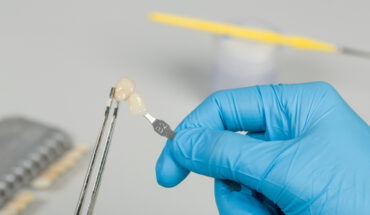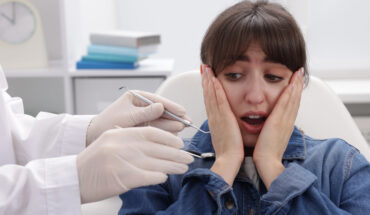Lots of people assume that periodontal disease is an adult problem. However, studies indicate that gingivitis (the first stage of periodontal disease) is found almost universally in children and adolescents. Advanced forms of periodontal disease are rarer in children than in adults, but they can occur.
The cleft lip or cleft lip is part of a range of orofacial defects comprising cleft lip and cleft lip with cleft palate. It is one of the most common birth defects, affecting approximately one in every 500 newborns. It is a problem that may be integrated into a syndrome with more alterations, or it may appear in isolation.
During the embryonic phase, there are areas of the body that are open, and it closes over time. Cleft lip and cleft palate are nothing more than defects in the closure of the middle part of the face (the junction between the medial nasal area and the upper jaw). Its manifestation is a fissure (more or less large, depending on the cases) between the upper lip and the nostril. It can extend backward, also dividing the gum and palate.
Keeping the plate clean of children often becomes a constant battle. This is why it is so important to brush your teeth well and visit the dentist regularly.
The sticky layer of germs that forms on teeth and gums is often the cause of this disease. The bacteria in the plaque make toxins that irritate and damage the gums. Untreated gum disease can be very serious, causing teeth to loosen and/or fall out. Hence the importance of dental care. Now the dentist considers that children who need medical help need to be entertained as part of it.
How gum disease progresses in a child with a cleft
Gum disease progresses in stages. More than half of adolescents have some form of this disease. Warning signs of gingivitis (first stage) include bleeding gums, as well as tender, tender, red, and/or inflamed gums.
When tartar forms, it begins to destroy the gum tissue, causing them to bleed and separate from the teeth. This is known as periodontitis.
For example, parents could reward children with visits from the little mouse or tooth fairy not only when a tooth falls out but when the child passes the dental exam. The children fear dentists less nowadays as they have more empathy and friendly.
Classes of periodontal diseases in cleft children
Chronic gingivitis is common in children. It usually causes the gums to become swollen, red, and bleed easily. Gingivitis can be prevented and also treated by following a regular routine of brushing, flossing, and professional dental care. However, if left untreated, it can progress over time to more serious forms of periodontal disease.
Signs of periodontal disease in cleft children
There are four basic signs of periodontal disease in your child:
- Bleeding: gums that bleed when brushing, flossing, or at any other time.
- Inflammation: swollen and red gums
- Recession: Gums that have receded from the teeth, sometimes exposing the roots.
The most important preventive measure against periodontal disease is to establish good oral habits in your children. There are three basic preventive measures to help your child maintain good oral health:
Institute good oral health habits early. When your child is 12 months old, you can start using toothpaste when brushing his teeth. However, use just a drop of toothpaste and push it into the bristles so your child won’t eat it. And when the gaps between your teeth close up, it’s important to start flossing.
Set a good example: practice good oral health habits.
- Make regular visits to the dentist for your family for checkups, periodontal evaluations, and cleanings.
- Examine your child’s mouth for signs of periodontal disease, including bleeding gums, swelling and redness of the gums, recessed gums, and bad breath.
- To maintain good gum health in children, the most important thing is the control of bacterial plaque. The most common bacterial problems in children are gingivitis caused by excess plaque, periodontitis, and necrotizing periodontal diseases.




